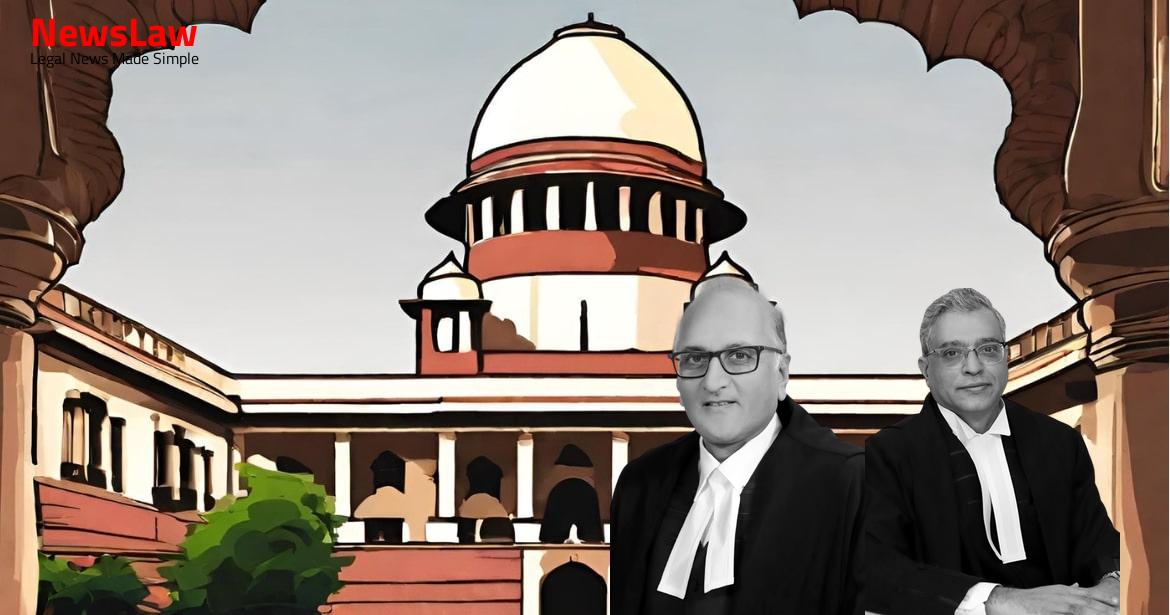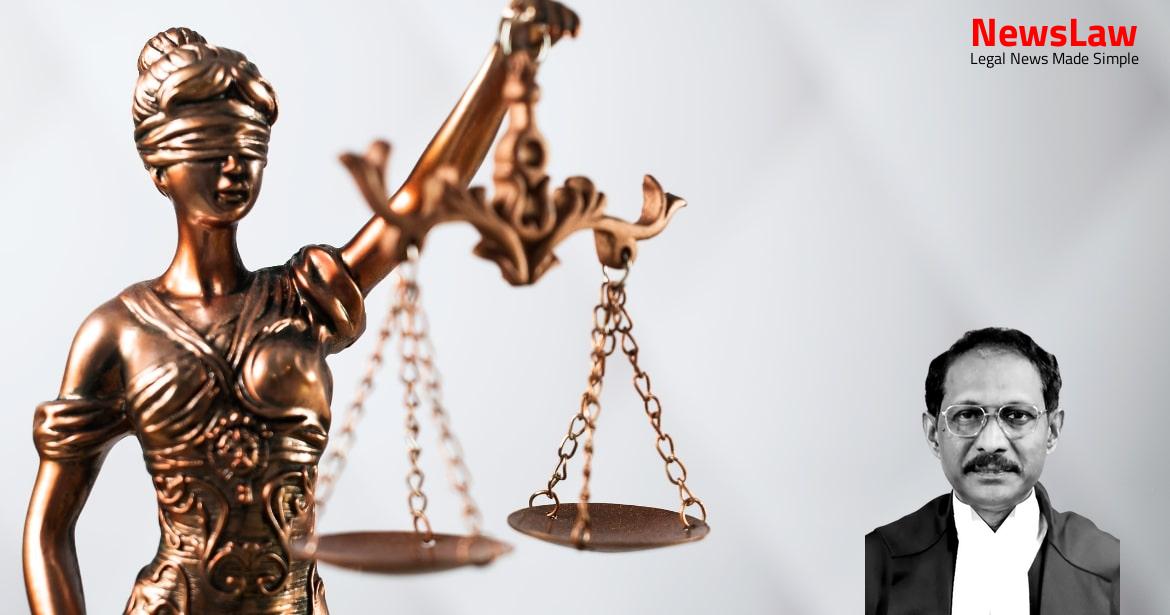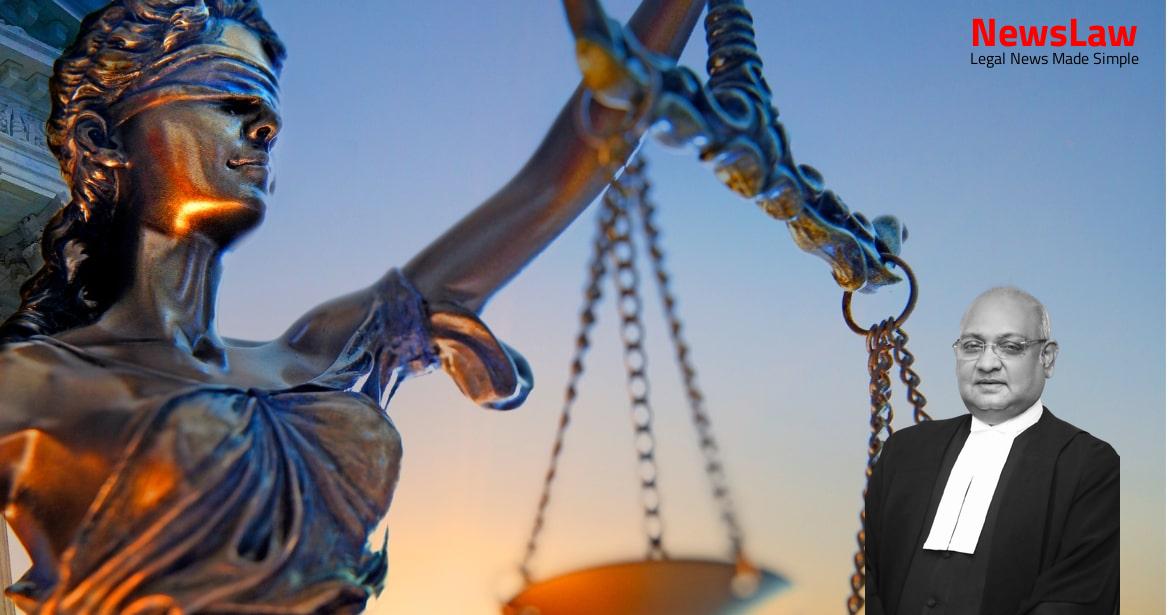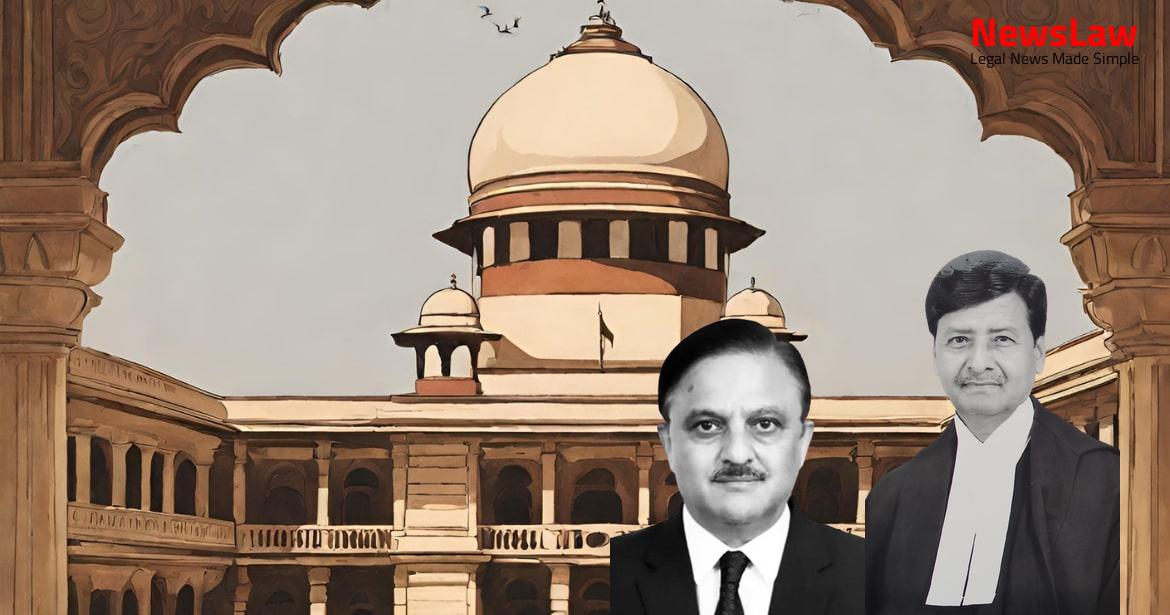Discover the fascinating legal intricacies surrounding contempt of court and the purging process as analyzed by the court. The recent case delves into the critical aspects of purging contempt, emphasizing the importance of compliance with court orders and undoing wrongful actions. Stay tuned to learn more about the legal complexities involved in maintaining the majesty of the law and upholding judicial authority.
Facts
- Extradition request for VM was forwarded to UK in February 2017
- Senior District Judge recommended VM’s extradition in December 2018
- VM appealed to the High Court of London, admitting the appeal on the sufficiency of prima facie case
- High Court of London dismissed the appeal in April 2020
- VM exhausted all avenues of appeal in the UK
- This Court rejected the submission seeking discharge for respondent no.3
Also Read: Balancing Power and Transparency: Electoral Bonds Struck Down, Disclosure Mandated
Issue
- Whether properties under the control of the concerned respondents at a later point in time were covered by the restraining orders
- All properties, whether movable or immovable, were governed by the orders of restraint regardless of when they came into the hands or control of the respondents
Also Read: Recall of Resolution Plan Approval: Legal Analysis
Arguments
- Communication between learned counsel and contemnor acknowledged by counsel for contemnor.
- Inability of Solicitors of contemnor to provide information about pending proceedings in the United Kingdom.
- Counsel for contemnor referred to judgment in State Bank of India v. Kingfisher Airlines, provisions of Contempt of Courts Act, and Supreme Court Rules, 2013.
- Reliance on decisions of this Court, including Supreme Court Bar Association v. Union of India.
Analysis
- The funds have been transferred in favor of trusts over which Respondent No.3 has no control, aggravating the violation.
- Respondent No.3 was found guilty of contempt of court and subsequent proceedings involved sequestration of assets and involvement of a forensic auditor.
- Extradition proceedings have concluded in the UK with no further avenues of appeal for Respondent No.3.
- Violation of court orders regarding the transfer of US$ 40 million by Respondent No.3, which was meant to be under restraint.
- Opportunity was given to Respondent No.3 to respond to contempt accusations and proposed punishment.
- Review of the judgment and order dated 9.5.2017 was sought by Respondent No.3 but later rejected by the Court.
- Violation of orders for restraint passed by the High Court of Karnataka by transferring funds, against court directives.
- The funds received by Respondent No.3, subject to controversy, were transferred in violation of court orders.
- Orders restrained Respondent No.3 and others from transferring properties, relevant to the current contempt proceedings.
- Contempt proceedings stem from recovery proceedings by banks against Respondent No.3.
- UK side informed that extradition of Respondent No.3 cannot happen until a separate legal issue is resolved.
- Respondent No.3 was notified about the violation of restraint orders by the High Court of Karnataka.
- Proof of payment of US$ 40 million to Respondent No.3 provided in court documents.
- Respondent No.3 has no control over trusts to which the funds were transferred.
- Recommendation for reversing the transactions by declaring them void due to Respondent No.3’s lack of control over trusts.
- Purging is a process of expelling undesirable elements from oneself or society.
- The concept of purgatory originated from the word ‘purge,’ referring to the purification of souls from deadly sins.
- In civil contempt, purging involves obeying court orders or undoing the wrong committed.
- For criminal contempt, the purging process is even stronger, possibly involving reversing the transaction that led to the contempt.
- Purging of contempt may also include disgorging benefits obtained through contumacious actions.
- Simply undergoing a penalty is not enough to purge contempt, especially in cases of criminal contempt.
- Purging of contempt in criminal cases may require more than just undergoing punishment; it may involve additional actions to demonstrate regret and compliance.
- The Bar Council of India opined that purging contempt in civil cases can be done through subsequent compliance with court orders.
- The Court may direct specific actions to nullify the benefits gained through contemptuous conduct.
- The process of purging contempt is essential to maintaining the majesty of law and upholding the authority of the judiciary.
- The matter can and ought to be dealt with by the Supreme Court, given that it pertains to the same cause as the High Court orders of restraint and involves the violation of orders from both courts.
- No prejudice has been caused to Respondent No.3 by the assumption of jurisdiction by the Supreme Court.
- Respondent No.3 is alleged to have committed contempt on two counts: disobeying the Supreme Court’s orders to disclose full asset particulars and violating the High Court’s orders of restraint in the same cause.
- Even though the contempt on the second count technically falls under the High Court’s orders, it is being considered by the Supreme Court due to its connection with the same cause.
- After considering the entirety of the matter, Respondent No.3 is found guilty of contempt of court on both counts.
- Respondent No.3 was required to appear in person in response to the notice issued by the Supreme Court in the Contempt Petition as per Rule 6(1) of the Rules to Regulate Proceeding for Contempt of the Supreme Court 1975.
Decision
- The transactions referred to in the Judgment and Order dated 09.05.2017, in which US$ 40 million was disbursed to the beneficiaries, are deemed void and inoperative.
- The Contemnor and the beneficiaries must deposit the received amounts with interest of 8% per annum to the concerned Recovery Officer within four weeks.
- The fine imposed must be deposited in the Registry of the Court within four weeks and will be given to the Supreme Court Legal Services Committee.
- Failure to deposit the fine within the stipulated time will result in an additional two months of sentence for the Contemnor.
- Mr. Gupta is allowed to choose an Advocate-on-Record for this matter and will receive the papers within a week.
- If the amounts are not deposited, the Recovery Officer is authorized to take further action for recovery, with full cooperation expected from the Government of India and relevant agencies.
- The matter is scheduled for final handling on 18.01.2022.
Case Title: STATE BANK OF INDIA Vs. DR. VIJAY MALLYA (2022 INSC 700)
Case Number: CONMT.PET.(C) No.-000421-000424 / 2016



